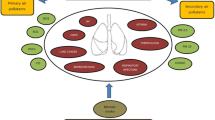Abstract
The usual procedure to obtain toxicological information is to link an effect with the frequency of its occurrence in a population. The most widely known example is the LD50 As this general and obvious point of view has not always been heeded in the study of the health effects of air pollution, its consequent use is advocated and exemplified here.
The customary concentration-duration diagrams, with an effect as parameter, lack the essential piece of information, which is the frequency with which that effect occurs.
The paper starts with the available concentration-duration-frequency of effect data. With their help, a tridimensional diagram may be constructed. As observations containing such complete set of data are rather scarce, a few geometrical rules are shown, which allow interpolations and internal checks, thus somewhat extending the data interpretation.
Any section through a constant frequency plane in this three dimensional representation defines unequivocal standards. The probability of the occurrence of a given effect is linked to a deliberate choice, in a fully analogues, quantitative way, as security factors in the engineering sciences.
Most of the published clinical, symptomatological, etc., data in air pollution do not contain information linking the frequency of an effect to the total population. That is the reason why there still are debates about standards: no inferences using the simple, objective graphical tool outlined here can be drawn. Because of the scarcity of adequate data, the present attempt is not one of proposing ambient standards, but rather one to outline an approach: how such standards might be defined.
Similar content being viewed by others
Bibliographie
Air Quality Criteria for Sulphur Oxides, U.S. Dept. of Health Education and Welfare, P.H.S. Publication No. 1619, Mars 1967. La dernière édition de cet ouvrage, AP-50, janvier 1969 ne contient pas ce paragraphe.
Benarie, M.: 1971, Proc. of the Second Internat. Clean Air Conf. Dec. 6–11, 1970 - Washington D.C. Academic Press Eglund Ed. p. 69.
Brasser, L. J., Joosting, P. E., et van Zuilen, D.: 1966, Anhydride sulfureux — à quel niveau est-il acceptable?, IG-TNO Rapport G300 publié en Hollandais.
Carnow, B. W., Lepper, M. H., Shekelle, R. B., et Stamler, J.: 1968, The Chicago Air Pollution Study: Acute Illness and SO 2 Levels in Patients with Bronchopulmonary Disease, APCA Meeting Minneapolis.
Dohan, F. C.: 1961, Arch. Envir. Health 3, 387.
Dohan, F. C. et Taylor, E. W.: 1960, Am. J. Med. Sci. 240, 337.
Glasser, M., Greenburg, L., et Field, F.: 1967, Arch. Envir. Health 15, 684.
Greenburg, L., Jacobs, M. B., et Field, B. M., et Braverman, M. M.: 1962, Pub. Health Rep. 77, 7.
Shabad, L. M.: 1971, Env. Res. 4, 305.
Toyama, T.: 1964, Arch. Env. Health 8, 153.
Author information
Authors and Affiliations
Rights and permissions
About this article
Cite this article
Benarie, M. Interpretation probabilistique de la notion — limite admissible. Water, Air, and Soil Pollution 3, 451–460 (1974). https://doi.org/10.1007/BF00340998
Issue Date:
DOI: https://doi.org/10.1007/BF00340998




